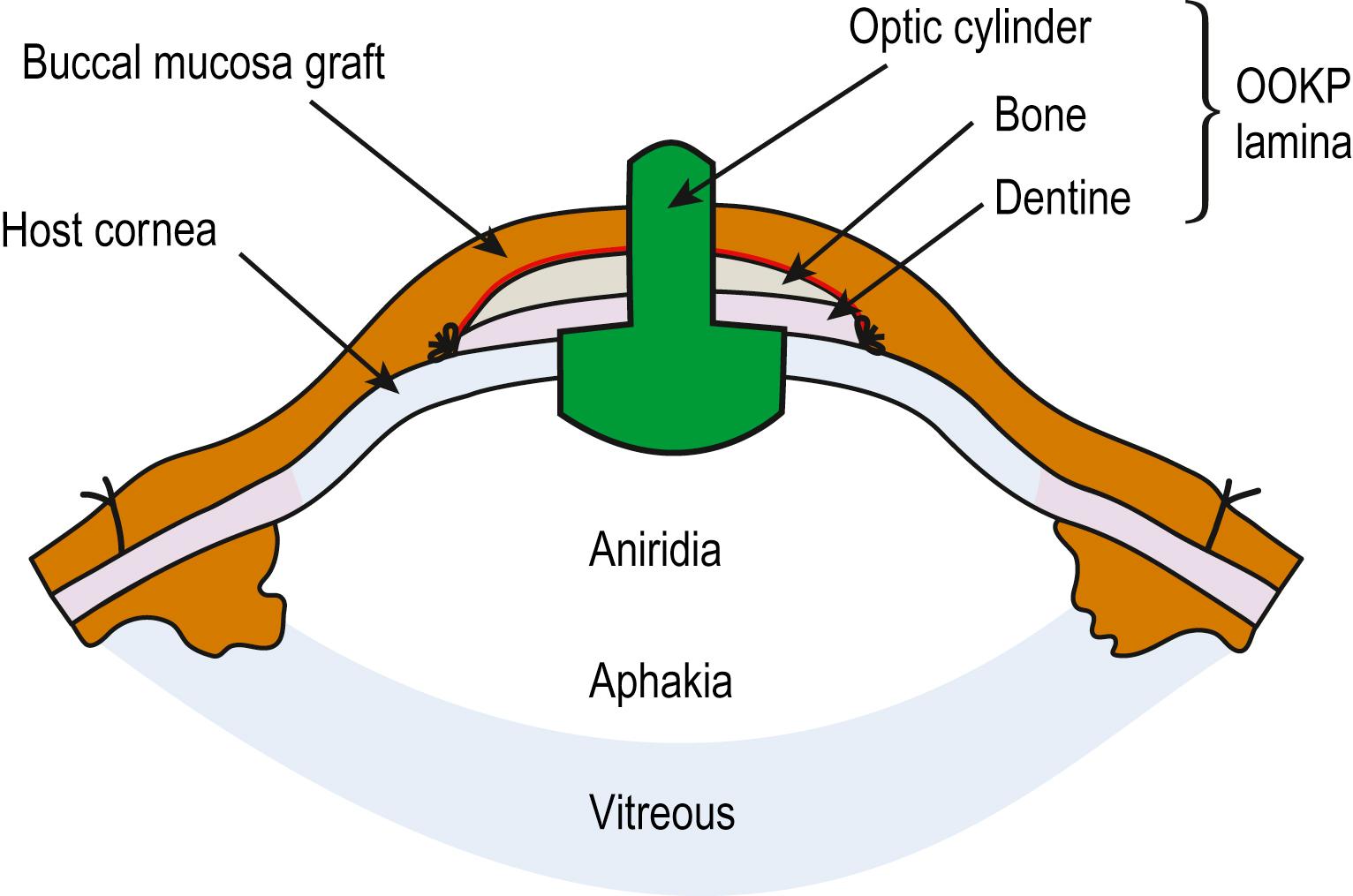Physical Address
304 North Cardinal St.
Dorchester Center, MA 02124
The osteo-odonto-keratoprosthesis (OOKP) is a form of keratoprosthesis that is indicated in cases of severe, end-stage ocular surface and corneal disease, such as Stevens-Johnson syndrome or chemical injury, where the severely compromised or dry ocular surface environment precludes long-term success in corneal or ocular surface transplantation.
OOKP surgery involves implantation of a polymethyl methacrylate optical cylinder cemented into an autologous tooth, coupled with replacement of the ocular surface with a full-thickness buccal mucosa graft.
Stage 1 involves extraction of an autologous monoradicular tooth and drilling it centrally for the placement of a cylindrical optic. The tooth–optic complex is buried in a suborbicularis pouch in the orbitozygomatic area, and a buccal mucosa graft is placed over the deepithelialized ocular surface.
In Stage 2, the tooth–optic complex is harvested and sutured to the cornea under the reflected buccal mucosa, with subsequent trephination of the mucosa for optic exposure.
Glaucoma is the most common sight-threatening complication and may be preexisting due to the underlying condition, or may develop de novo following OOKP.
The OOKP has excellent long-term anatomic survival rates, with reported rates of 81% at 20 years.
OOKP is technically challenging and requires subspecialty expertise and a multidisciplinary approach for success; however, it remains a viable long-term option for visual rehabilitation in patients with severe, end-stage ocular surface diseases.
Surgical management of end-stage ocular surface disease remains challenging. Even with significant advances in ocular surface reconstruction and limbal stem cell transplantation, results and long-term survival remain poor for the majority of cases, especially in severe dry eye states. The main limitation of other synthetic keratoprostheses (Boston, Alphacor) lies in poor long-term survival and associated visually devastating complications, such as prosthesis extrusion and endophthalmitis for severe dry eyes. , To date, osteo-odonto-keratoprosthesis (OOKP) is the only modality that has demonstrated good long-term survival and retention rates for patients with severe, end-stage ocular surface disease.
Originally conceptualized and developed by Strampelli in the 1960s, the OOKP is an artificial cornea procedure that involves replacement of the ocular surface with a full-thickness buccal mucosa graft and implanting a polymethyl methacrylate (PMMA) optical cylinder into an autologous canine tooth that is inserted into the cornea ( Fig. 161.1 ). Key modifications to the original technique were introduced and refined by Falcinelli, Liu, and others, leading to the formation of the Modified OOKP teaching group (Falcinelli, Rome, Italy; Liu, Brighton, UK; Grabner, Salzburg, Austria; Hille, Holmberg, Germany; and others). , In 2001–2002, this group met at a consensus meeting to establish the Rome-Vienna protocol and standardize the surgical technique for modified OOKP surgery.

Initiation of an OOKP surgical program requires considerable institutional commitment and resources within a tertiary ophthalmic center with subspecialty expertise and necessitates adequate training in appropriate patient selection, surgical training, and guidance in postoperative care. Today, just a few tertiary centers that offer this multidisciplinary procedure exist globally, mainly in Europe and Asia.
Become a Clinical Tree membership for Full access and enjoy Unlimited articles
If you are a member. Log in here